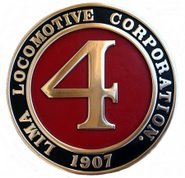
Saturday morning, El Dorado Western Railway President
Keith Berry instructed volunteer
Cal Jessiman to give me a refresher course on the operation of the CP and LT No. 4 speeder. I last ran the track inection car two years ago at an open house on the site of the then proposed railway park in the Town of El Dorado.
Keith wanted my son
Jacob and me to make several training runs between the El Dorado and Blanchard crossings while he picked up additional equipment at the county museum.
I followed as Cal detailed the protocol to start the speeder. "This is going to take three hands," explained Cal. I soon leaned what he meant.
To operate the Kalamzoo speeder, grip the clutch lever with your right hand and grab the brake lever with your left hand, said Cal. Then somehow, use your "free hand" to control the throttle.
As Cal explained the process, I rehearsed the emergency braking procedure in my hand and with my hands. Better to simulate disengaging the clutch and engaging the brake now than to fumble through it when a worker walks onto the tracks in front of the moving speeder.

To start the engine, set the brake and place the transmission in neutral, instructed Cal. Turn the key, while gently nudging the throttle forward until the engine catches. Next came the tricky part -- throwing the transmission into gear and proceeding without stalling the engine.
Cal continued. Disengage the clutch with your right hand, shift the transmission into low range and slowly let the clutch out. This is wear the three handed operation comes into play.
I slowly guided the clutch until the transmission was firmly engaged. At the same time I had to be ready to give the engine gasoline to keep it from cutting out. With my left hand on the brake, I slipped the clutch, slowly reduced pressure on the brake and gave the engine one-third throttle -- it worked!
The speeder only jerked once or twice. Two longs on the horn and we were off for the El Dorado Road crossing. (Two long toots on the horn tells railroad workers that you've released the brakes and are proceeding forward.)
Once we were rolling westward on the Placerville Branch, I asked Cal about the origin of his three hands tag. "You know, that sounds a lot like something Keith would say."

"That's exactly what Keith was telling me (yesterday)," said Cal. "You need three hands to do this." Cal operated the speeder for the first time Thursday.
Twenty-three minutes later the run ended. We arrived at Hagen's Crossing, a dirt driveway that crosses the tracks about one-quarter mile east of the railroad depot site. It was time to pass the throttle to the next operator.
Jacob jumped into the operator's seat. A bit apprehensive about the process, he motioned with his hands as I walked him through it.
"Wear gloves," I said as I guided him through the process. "The engine throws off a lot of heat. Keep your left hand on the brake and your right on the clutch and your eye on the road."
It was up to Jacob to figure out how to manage the throttle!
 Cal Jessiman, left, was given the honor of driving the first spike into the first tie. Railway President Keith Berry lifted the tie with a pry bar for Cal.
Cal Jessiman, left, was given the honor of driving the first spike into the first tie. Railway President Keith Berry lifted the tie with a pry bar for Cal.













